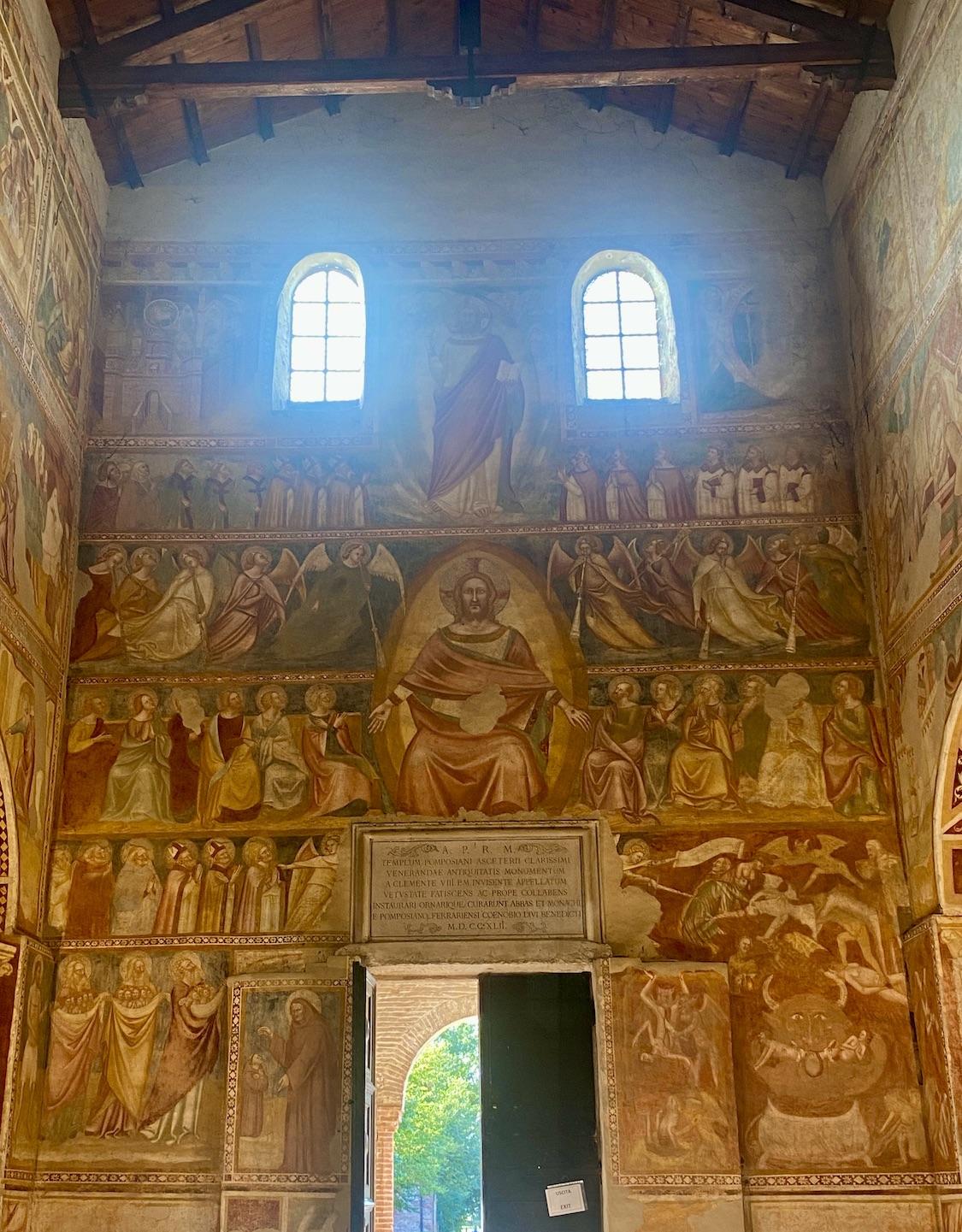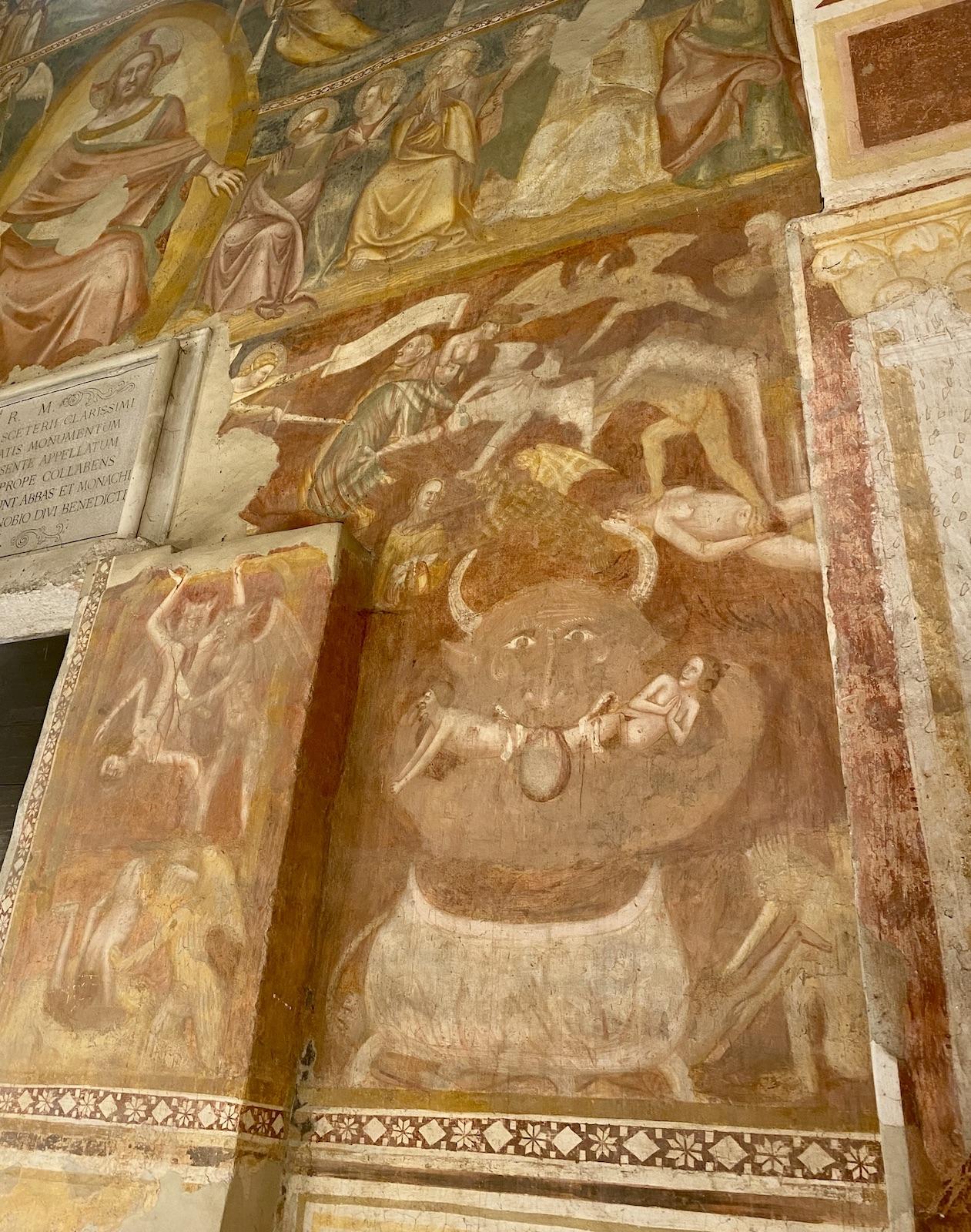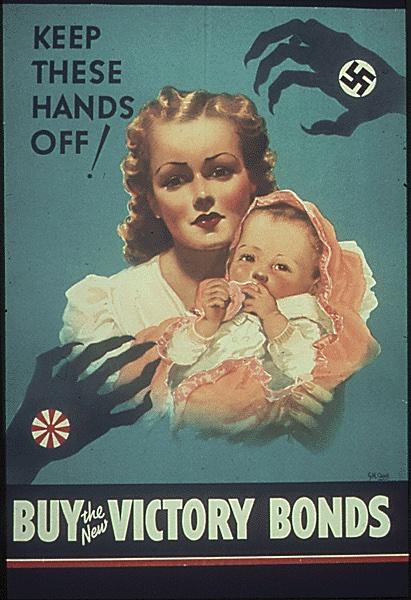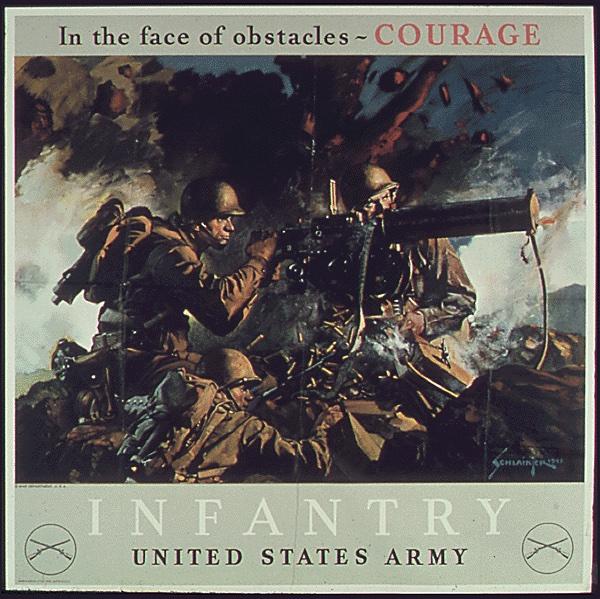Meanwhile, for those who sinned, the images that appeared on churches’ walls told a future of terrifying punishments, monstrous devils, and eternal damnation. These frightening scenes were usually placed at the exit of the church so that, once the mass was over, the congregation would be reminded of the consequences of their behavior on earth. Fear was a powerful tool.
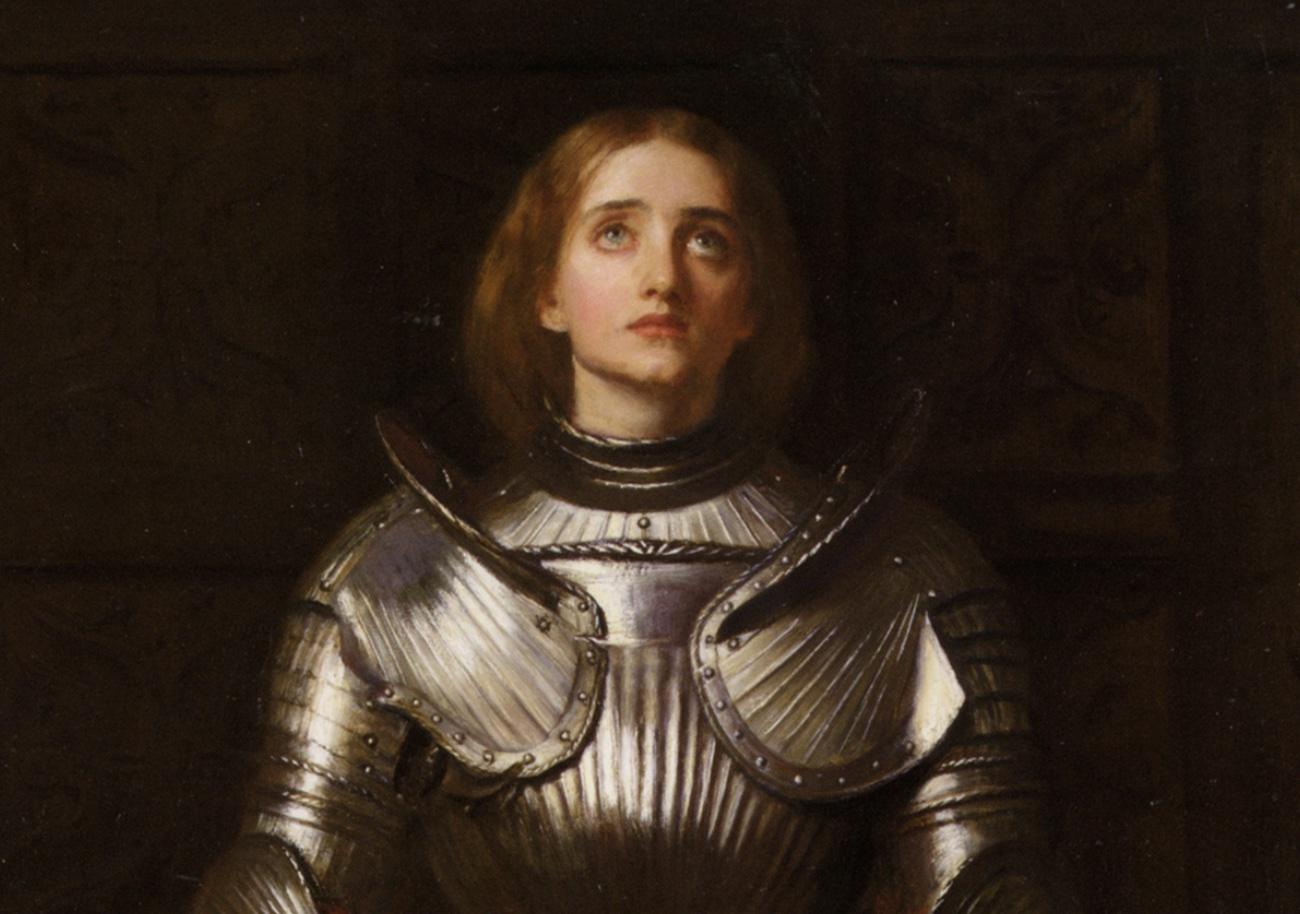
John Everett Millais, detail of Joan of Arc, 1865. Oil on canvas 32.2 x 24.4 in. (82 x 62 cm).
For many centuries, art retained a strong didactic purpose. Artists frequently operated under the patronage of governments and religious organizations to produce artworks that could inspire certain feelings or behaviors in the population. Throughout the medieval period in Europe, religious art was created in order to remind believers of the heavenly rewards of a well-led life.

Jacques de Gheyn II, Vanitas Still Life, 1603. Oil on wood. 32 1/2 x 21 1/4 in. (82.6 x 54 cm).
The Romanesque Abbey of Pomposa in Codigoro, Ferrara, provides us with some of the most frightening examples. The Abbey, built in the ninth century, is renowned for being one of the most important Benedictine monasteries in northern Italy. Standing in front of the exit, we are presented with a detailed rendition of Judgment Day. Jesus sits in the center: on his right, the blessed ascend into Heaven guided by angels; on his left, the damned are tormented by demons and the devil, depicted as a horned monster, feeds on desperate souls. The damned are being torn into pieces, beaten, and disemboweled. There is no hope. “Be afraid!” the artist seems to tell the believers, “For damnation is eternal.”
In the 1600s, the inevitability of death became depicted in funerary art through memento mori, a Latin phrase that translates into “remember that you will die.” Although less scary than the depictions of Judgment Day, memento mori was still a powerful reminder that life was short and that death would come for all. Skulls, the symbol of death and mortality, were used to adorn jewelry, clocks, and rosaries.

Sandro Botticelli, Fortitude, 1470. Tempera grassa on wood. 65.7 x 34.2 in. (167 x 87 cm).
Similarly, the artistic genre of vanitas, especially in the form of still lifes, stressed the futility of material objects and earthly pleasures by placing skulls, hourglasses (passage of time), and bubbles (ephemerality of life) beside fruits, flowers, and insects. One of the earliest vanitas still life paintings was made by the Dutch artist Jacques de Gheyn II in 1603.
Courage lies on the other side of fear. Because of its association with heroism and war, courage has frequently been visually expressed through armor and weapons. In 1470, the Italian Sandro Botticelli painted Fortitude, one of the seven heavenly virtues, as a young woman wearing shiny armor and a red robe. The allegorical figure sits on a marble throne with a gaze that appears melancholic and pensive, possibly a sign of the fact that being courageous is not always easy.
John Everett Millais, one of the founders of the Pre-Raphaelite Brotherhood (1848-1853), interpreted the bravery of Joan of Arc in a similar way. In his 1865 painting, Joan of Arc also wears armor and a red robe. Knelt in prayer with her eyes turned upwards and her hands clenched on a sword, Joan appears to be mustering the courage to go to battle.

John Everett Millais, Joan of Arc, 1865. Oil on canvas 32.2 x 24.4 in. (82 x 62 cm).
In modern times, fear and courage have played a central role in the creation of wartime visual propaganda. In American propaganda posters created during WWII, fear was associated with the German and Japanese threat, while courage was the defining characteristic of the US troops.
In Keep These Hands Off! the artist conveyed fear by portraying two menacing hands hovering over a mother and her child. Conversely, in In the Face of Obstacles, courage was not only written in bright red but shown through the actions of brave infantry soldiers ready to overcome any obstacle for the sake of their country.
Deeply intertwined, fear and courage have traveled together across the centuries through the eyes and hands of artists. Art shows believers the rewards and punishments of the afterlife, reminds us of the brevity of life, and leads us by example through the vicissitudes of heroines such as Joan of Arc. Art is a powerful tool through which we can learn how to deal with our fears, muster courage in times of need, and be inspired by those who came before us and succeeded in their endeavors.




